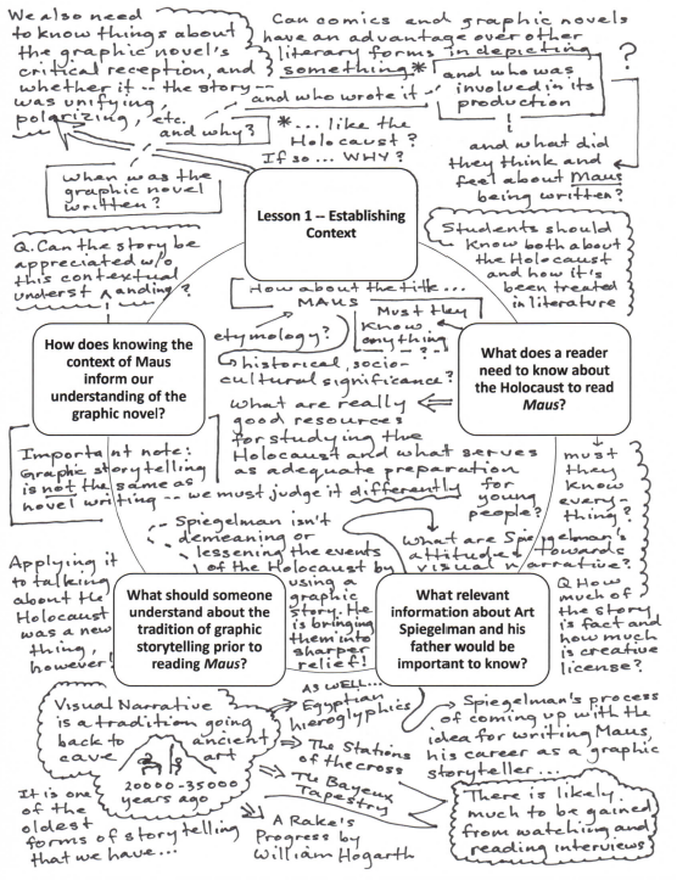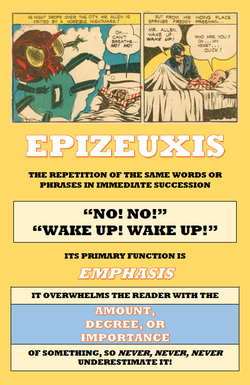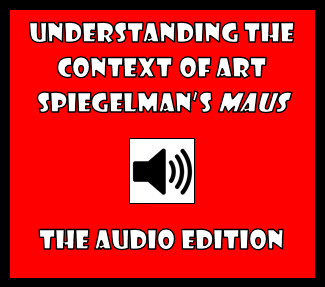Much more than a series of lessons... A lot of educators have approached me asking about how I teach Art Spiegelman's Maus. I've considered putting together a conventional unit plan, but I've always resisted, in part because I don't feel that the graphic novel is best served by taking a conventional approach. If we are to produce students that can go beyond "receiving" meaning and indeed can learn to "make" it, then something else is needed. Enter Maus: An Inquiry-Based Unit Plan in 5 Lessons. You might initially think that five lessons means five classes, but there is no limitation on how much or how little time is spent on the five areas of investigation that the unit plan highlights. And as I said earlier, calling it a unit plan undervalues it I think. It's a way of approaching Maus that forces the student to inquire in a profound way--to ask deep questions about the Holocaust, literary biography, guilt, memory, the history and tradition of visual narrative, racism, genocide, and Maus's place as a work of literature. Here's what I mean by different: Each of the five lessons has relevant questions that teachers and students ask as they make their way in a clockwise fashion beginning at the top. But as for where your lesson can go, the unit plan is designed to allow it to go wherever you like. How much time you allow students to investigate Art Spiegelman (as a writer, artist, chronicler of his father's experience, etc.) or Vladek (as a Holocaust survivor, husband, father, etc.) is entirely up to you. The power of this plan, then, is that it doesn't limit you in any way and encourages students to inquire without restrictions. This is not a series of traditional lesson plans with an assessment at the end. This is a series of crazy, cool, provocative questions and insights that hopes to inspire you to build powerful inquirers in your students. The unit plan is currently available in our store, and is loaded with ideas that can serve as jumping off points. There is no attempt in this six page pdf to be exhaustive, and yet the possibilities that it opens up for studying Maus will allow you to take as much time as possible covering the unit. For a limited time, get 60 Blackline Masters of comic book pages with unique panel arrangements with the Maus Unit Plan!
0 Comments
Your comment will be posted after it is approved.
Leave a Reply. |
Glen DowneyDr. Glen Downey is an award-winning children's author, educator, and academic from Oakville, Ontario. He works as a children's writer for Rubicon Publishing, a reviewer for PW Comics World, an editor for the Sequart Organization, and serves as the Chair of English and Drama at The York School in Toronto. If you've found this site useful and would like to donate to Comics in Education, we'd really appreciate the support!
Archives
February 2019
|






 RSS Feed
RSS Feed
